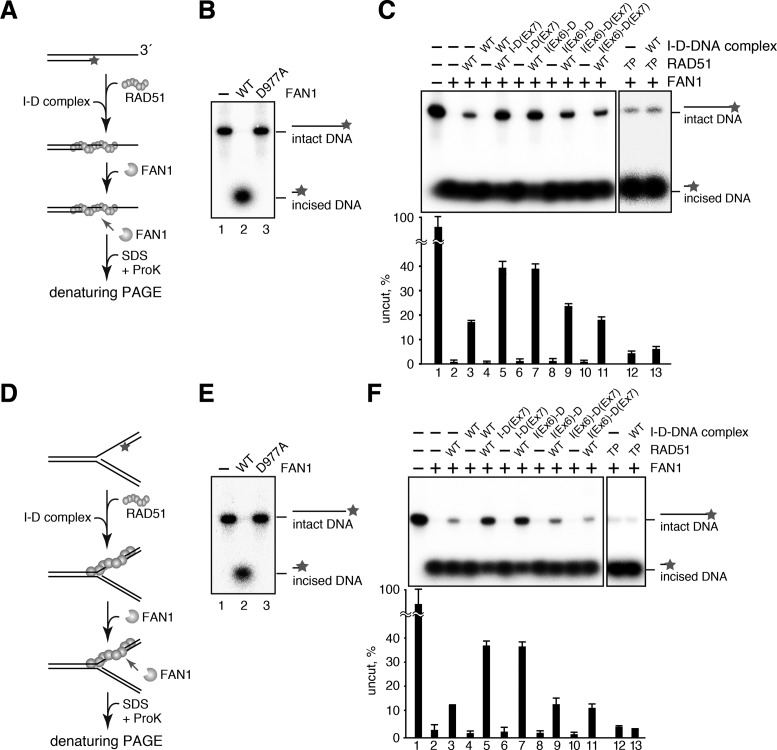Figure 6.
The I-D complex protects a DNA end from undesired nucleolytic processing by RAD51-DNA filament stabilization. (A) Schematic diagram of the nuclease protection assay with the 3′-tailed DNA. (B) The 3′-tailed DNA, labeled at the 5′-end of the short strand with 32P, was incubated with the FAN1 nuclease domain or the FAN1 D977A mutant, and the resulting DNA fragments were analyzed by denaturing PAGE. (C) Nuclease protection assay with the 3′-tailed DNA. RAD51 or RAD51 T131P (TP), which contained a mutation found in a FANCR patient, was assembled on the 3′-tailed DNA in the presence of the I-D, I-D(Ex7), I(Ex6)-D or I(Ex6)-D(Ex7) complex that was preincubated with dsDNA. After an incubation with FAN1, the resulting DNA fragments were analyzed by denaturing PAGE. Band intensities of undigested 32P-labeled strand DNA were quantitated, and mean percentages of three independent experiments are indicated as bars with standard deviations. (D) Schematic diagram of the nuclease protection assay with the replication fork-like DNA. (E) The replication fork-like DNA, with the 5′-end of the shortest strand labeled with 32P, was incubated with the FAN1 nuclease domain or the FAN1 D977A mutant, and the resulting DNA fragments were analyzed, as in panel B. (F) Nuclease protection assay with the replication fork-like DNA. Experiments were performed as in panel C. Stars denote 32P at a 5′-DNA end.

